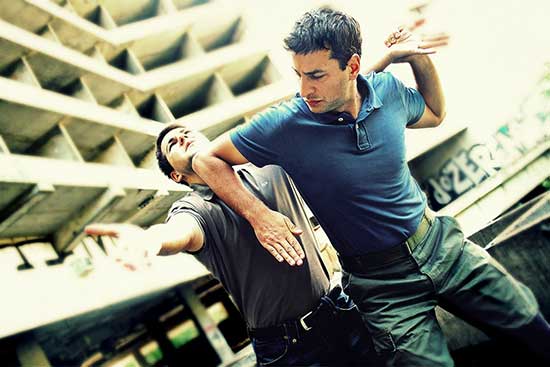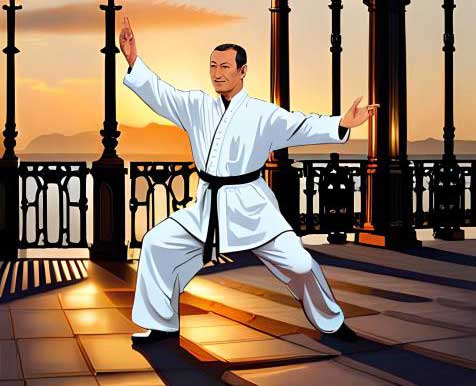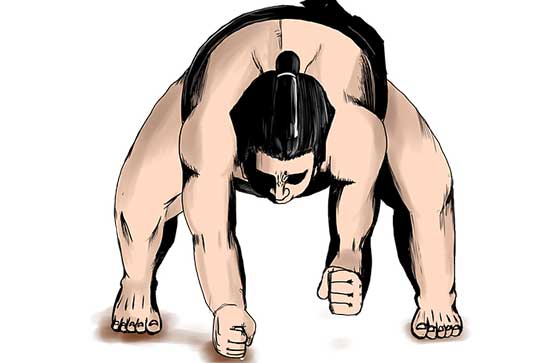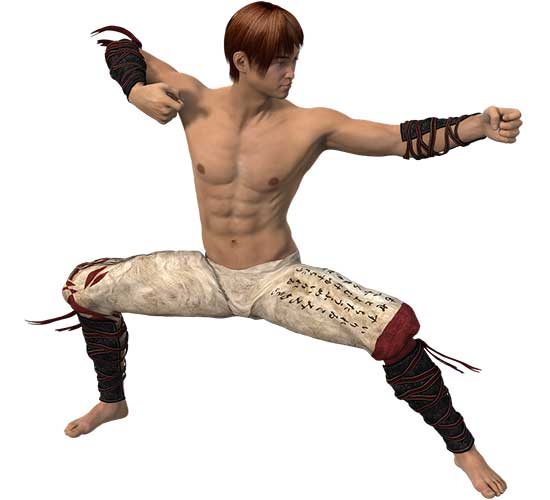Krav Maga is a well-known fighting style developed in Israel in 1930. It is focused more on practical self-defense scenarios.
Krav Maga is renowned for its quick, aggressive, and effective techniques that are made to quickly subdue an attacker.
Being a hybrid martial art, Krav Maga incorporates grappling and other combat sports techniques.
In the more advanced classes, there may be some exposure to grappling depending on the instructor’s background and experience.
Due to its emphasis on self-defense, Krav Maga typically teaches just enough grappling to help you quickly get off the ground and back into a defensive stance.
Krav Maga includes boxing, karate, aikido, muay Thai, and other combative arts in addition to kicks and strikes and weapon defense.
So yes, there are some grappling techniques in Krav Maga. But it’s important to remember that Krav Maga is primarily a striking art, emphasizing the use of punches, kicks, and other striking methods to subdue an aggressor.
However, grappling techniques continue to be a component of Krav Maga because they can give practitioners an advantage in a self-defense scenario.
Contents
Grappling techniques used in Krav Maga
The clinch
The clinch is one of the main grappling strategies used in Krav Maga. In this clinch, two fighters are in close proximity to one another and are held together by one fighter’s arms around the other fighter’s body.
This technique is used in Krav Maga to restrain an attacker’s movement and strike them with knees, elbows, and other weapons.
The clinch can also be used to knock an attacker to the ground so that Krav Maga practitioners can finish the fight using their ground-and-pound skills.
Takedown
The takedown is another great grappling maneuver used in Krav Maga. This move is used to lower opponents to the ground so that you can control them and use ground-and-pound techniques on them.
The double-leg takedown, single-leg takedown, and trip takedown are a few of the takedown techniques used in Krav Maga.
Each takedown technique is made to be quick and efficient so that a Krav Maga fighter can quickly bring his attacker to the ground.
Krav Maga practitioners use a variety of ground-and-pound techniques to finish a fight once their opponent is on the ground.
The term “ground and pound” refers to the methods a fighter use while they are down to strike their opponent.
Punches, elbows, knees, and other strikes are part of the ground-and-pound techniques used in Krav Maga in order to quickly render an attacker helpless.
Submissions
Krav Maga includes a number of submission techniques in addition to these grappling techniques. Submissions are tactics used to choke or manipulate the joints of an attacker in order to make them submit.
Submissions are typically used in Krav Maga as a last resort after other techniques have failed to render an attacker helpless. They remain a great technique in the Krav Maga arsenal, though.
The rear-naked choke is the submission maneuver most frequently used in Krav Maga. In the rear-naked choke, the attacker is choked by wrapping their arms around their neck and applying pressure, which stops their airway and renders them unconscious.
Krav Maga also uses armlocks, wristlocks, and leglocks as submission methods.
However, Krav Maga is not a traditional grappling art like Brazilian Jiu-Jitsu or wrestling. This is important to keep in mind.
The focus of Krav Maga is on practical self-defense scenarios, and its grappling techniques are made to be quick and efficient so that practitioners can put an end to a fight as soon as possible.
Krav Maga practitioners are taught straightforward, practical grappling techniques rather than being expected to spend years perfecting complex grappling maneuvers.
Conclusion
In conclusion, grappling techniques are a part of Krav Maga, but they are not its primary focus. The clinch, takedown, ground and pound, and submissions are all significant Krav Maga techniques, but they are taught in a straightforward and applicable way.
Krav Maga students are taught to quickly take down an attacker and flee, as opposed to engaging in a protracted grappling match.
It’s also crucial to remember that while Krav Maga’s grappling methods work well for self-defense, they might not be appropriate for a sport grappling match.
The Krav Maga techniques are made to harm an attacker as much as possible, which might not be permitted in a sporting setting.
Furthermore, grappling moves in Krav Maga are frequently combined with striking moves. A Krav Maga practitioner may combine striking and grappling techniques to quickly take down an attacker in a real-world self-defense scenario.
Students should therefore be skilled in both striking and grappling techniques.





